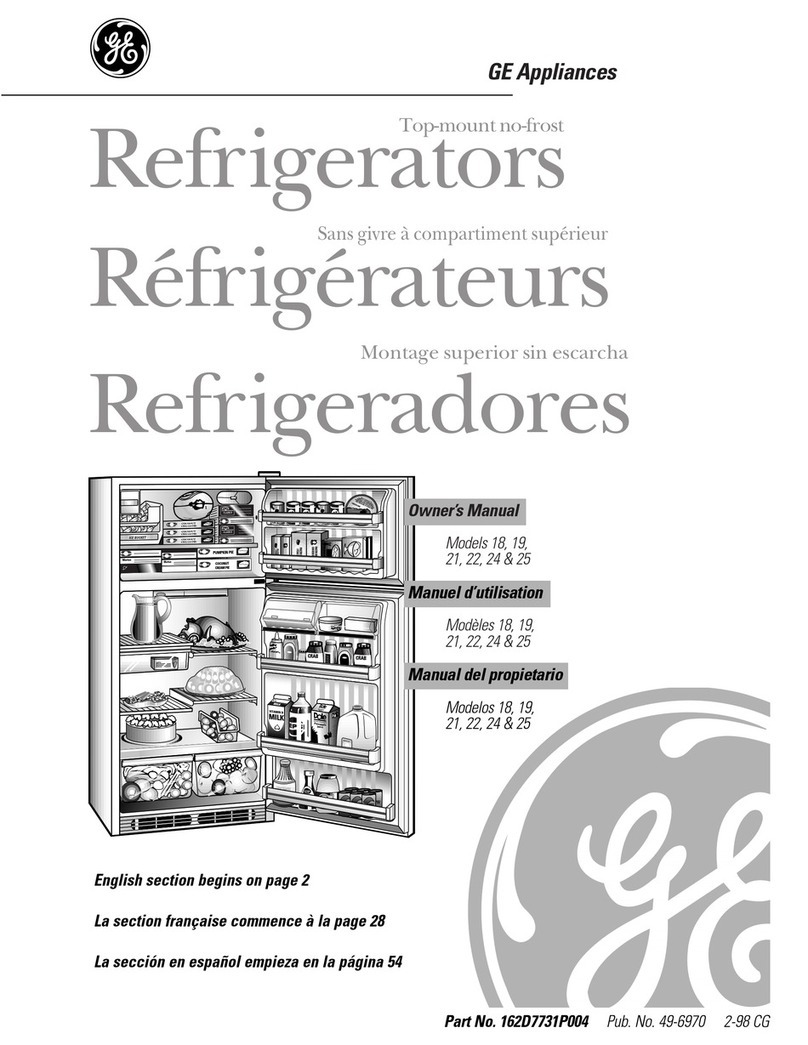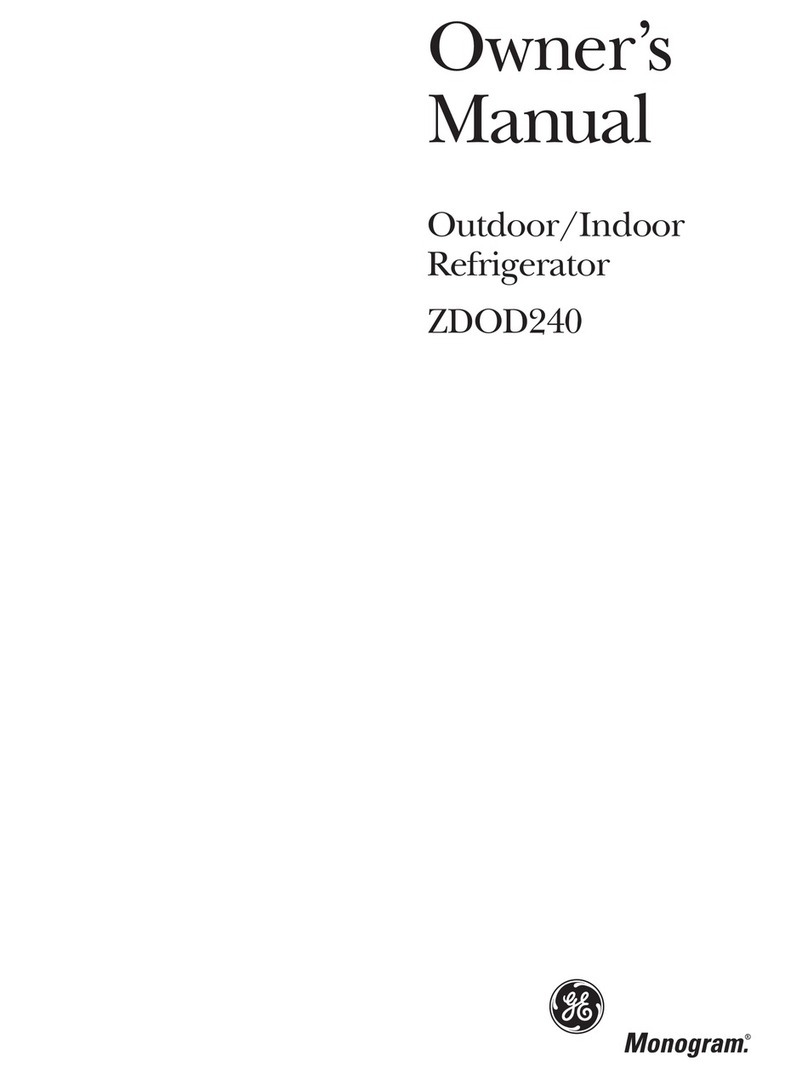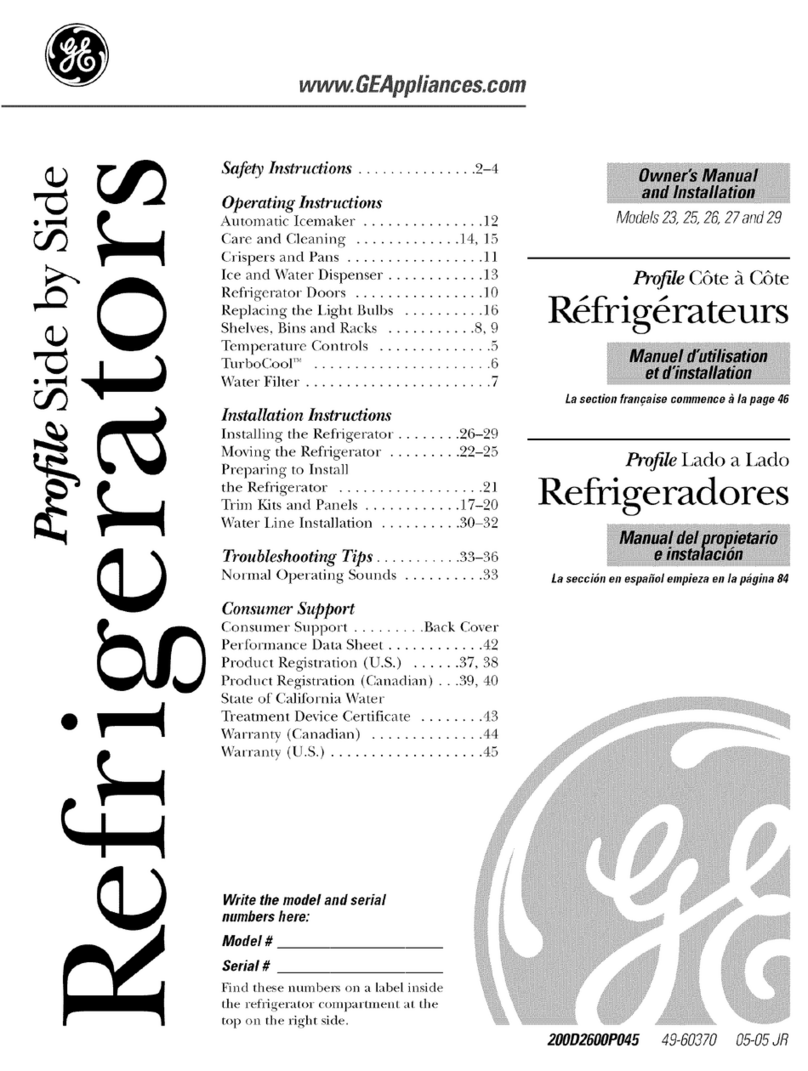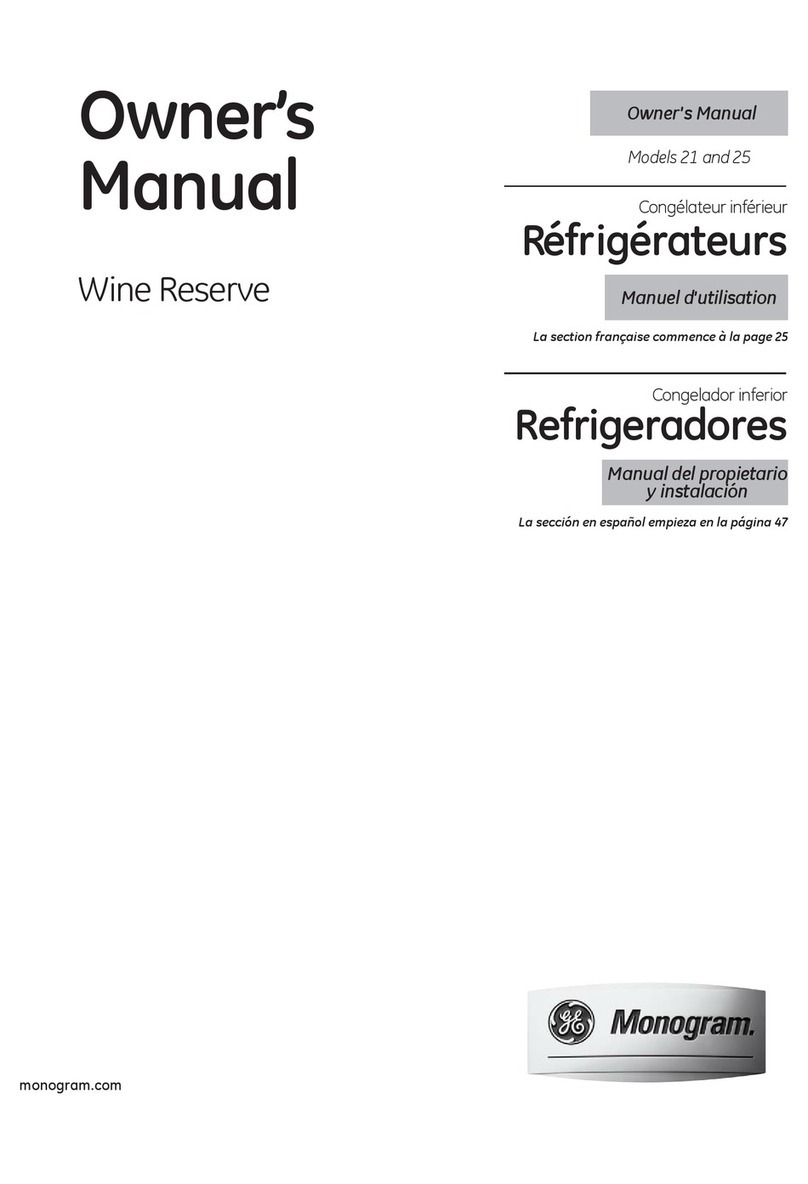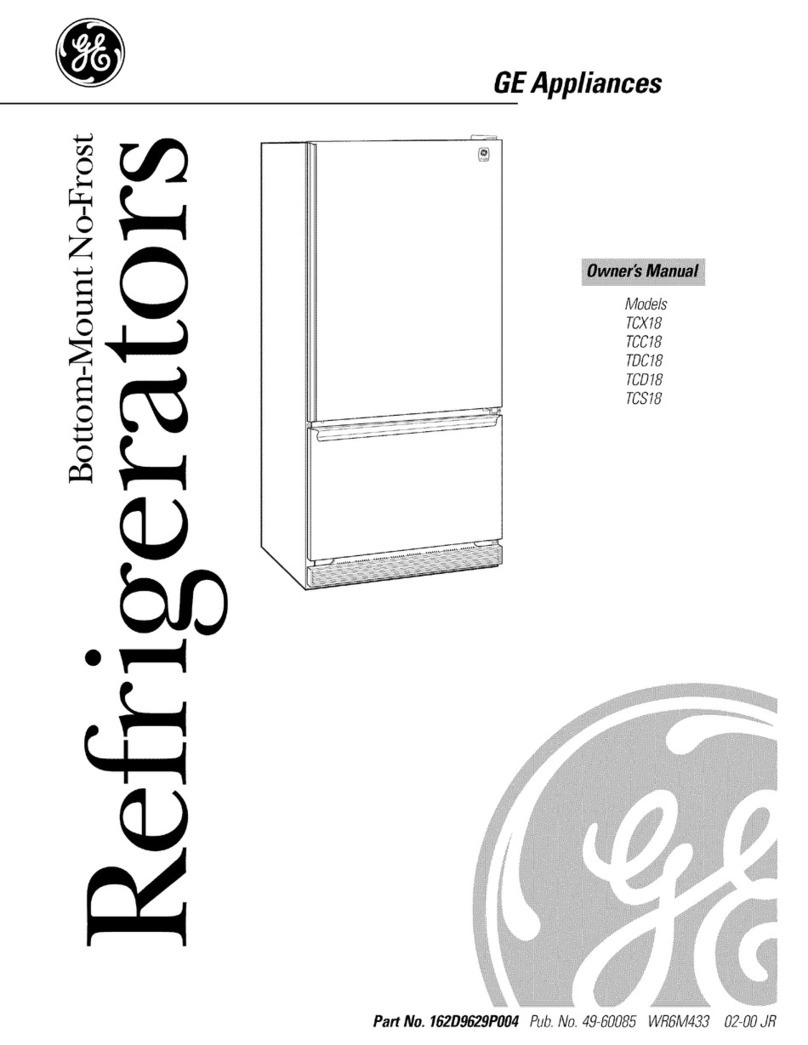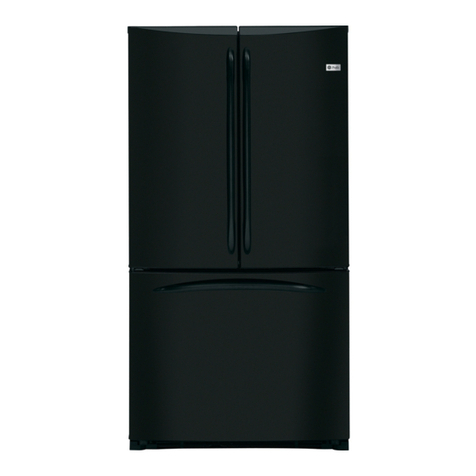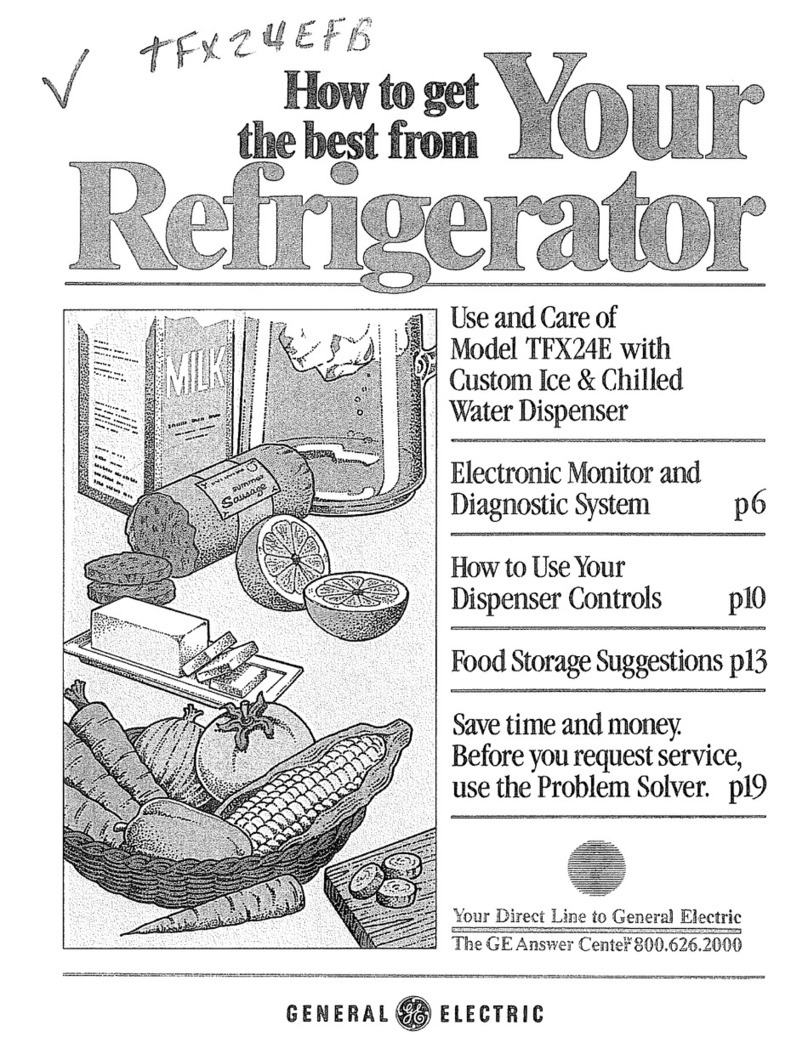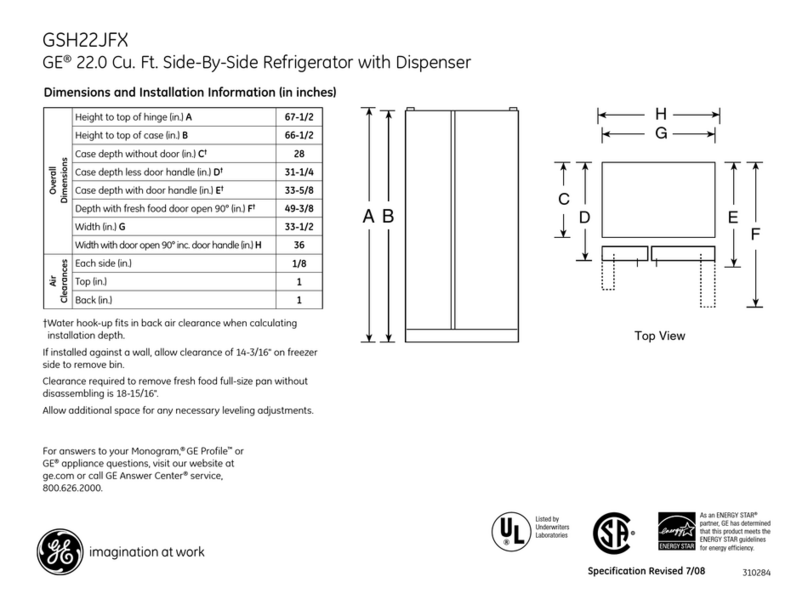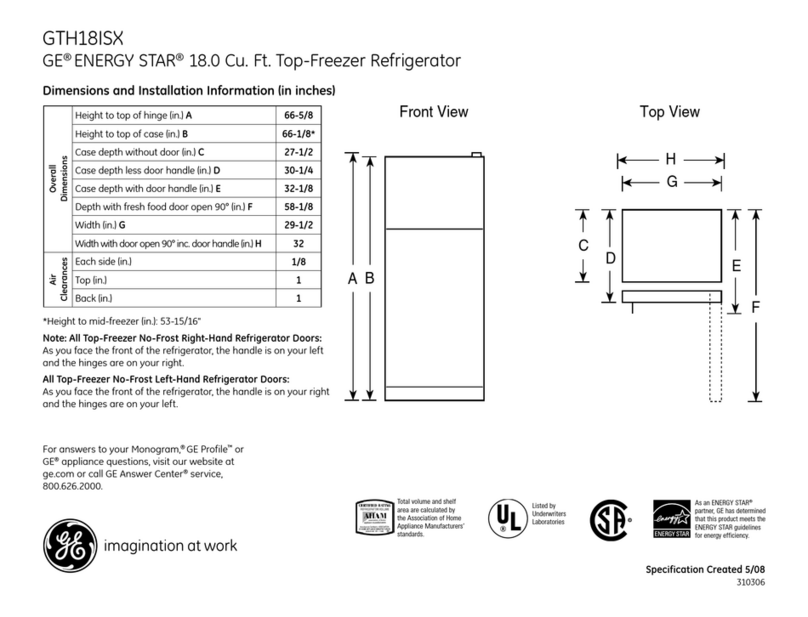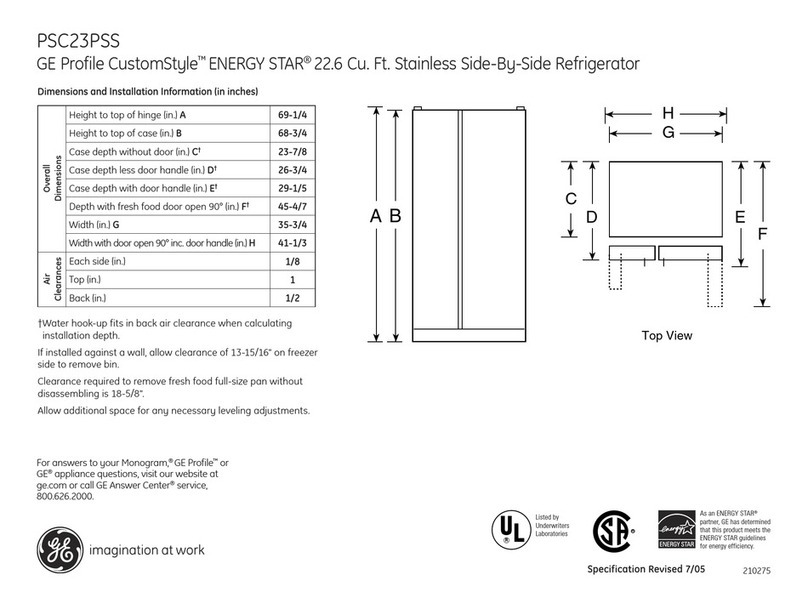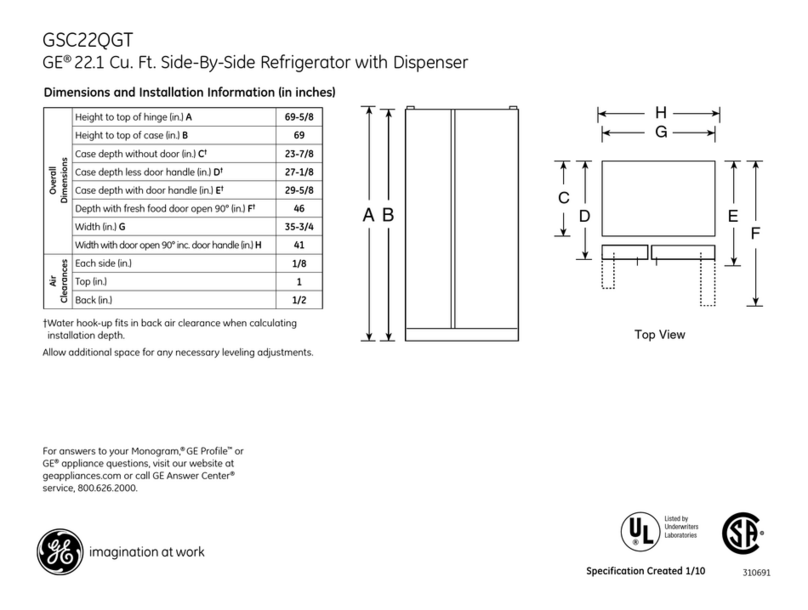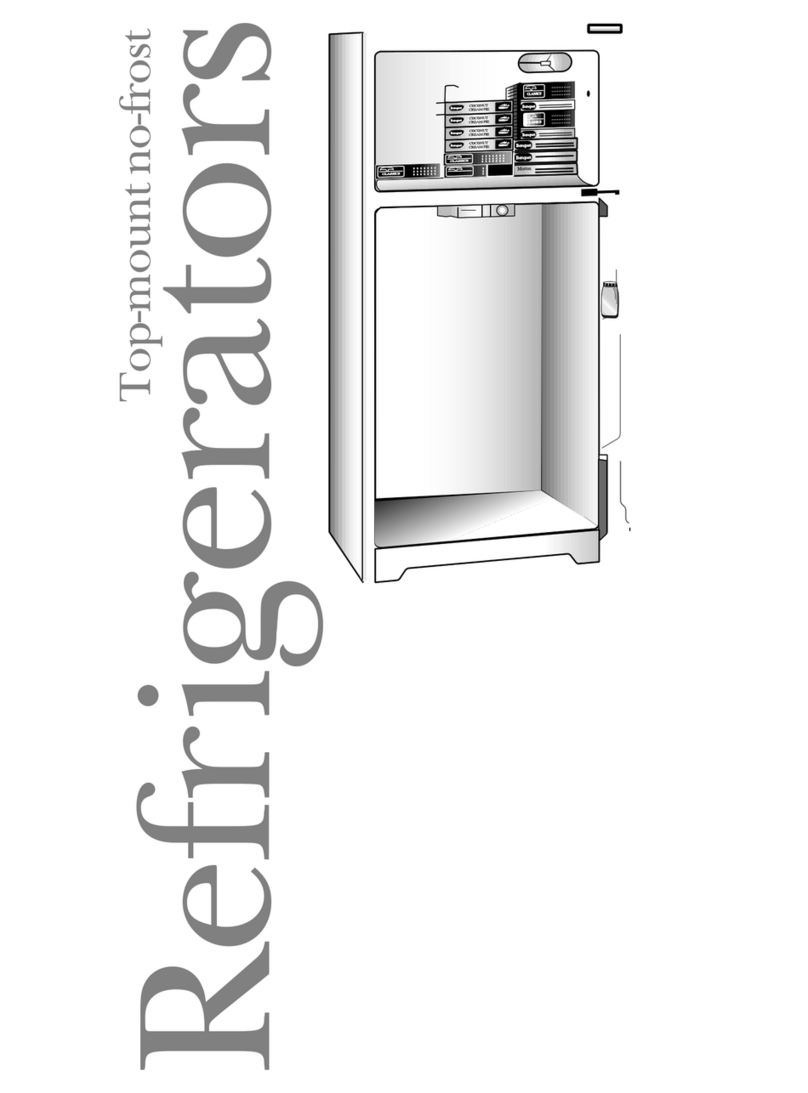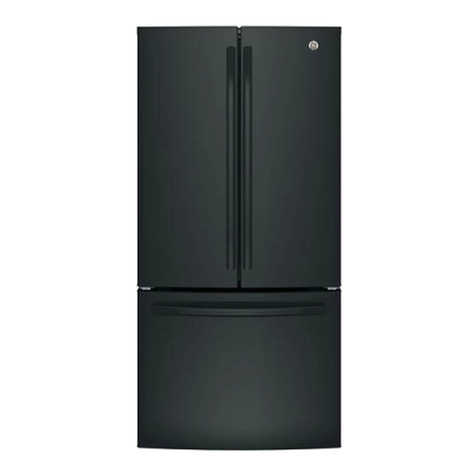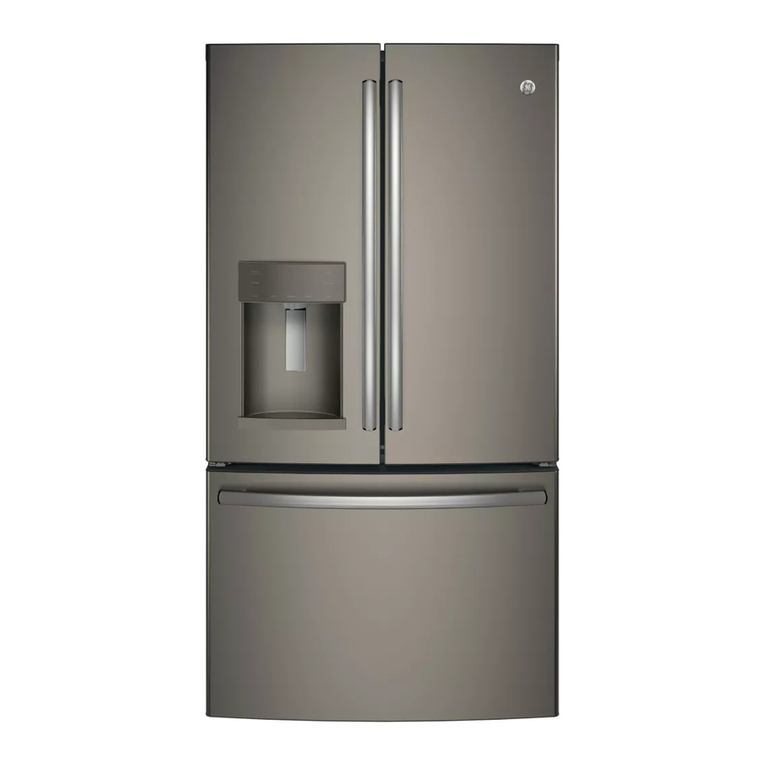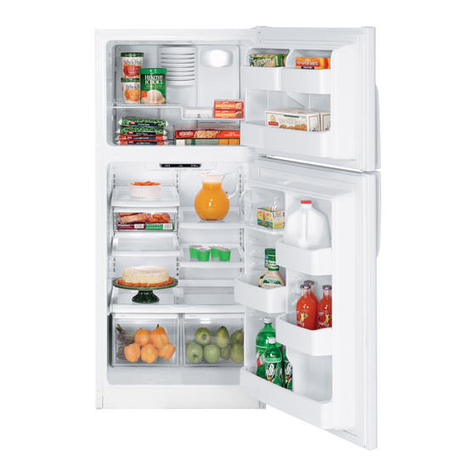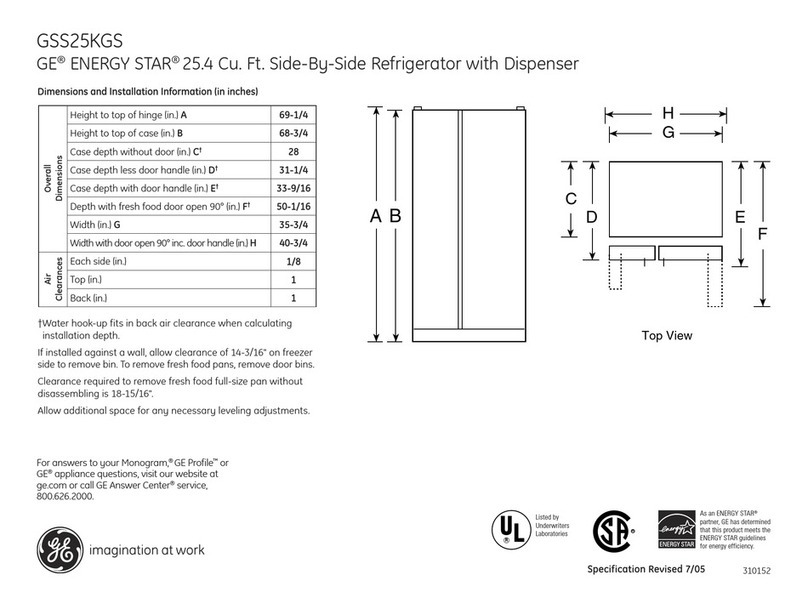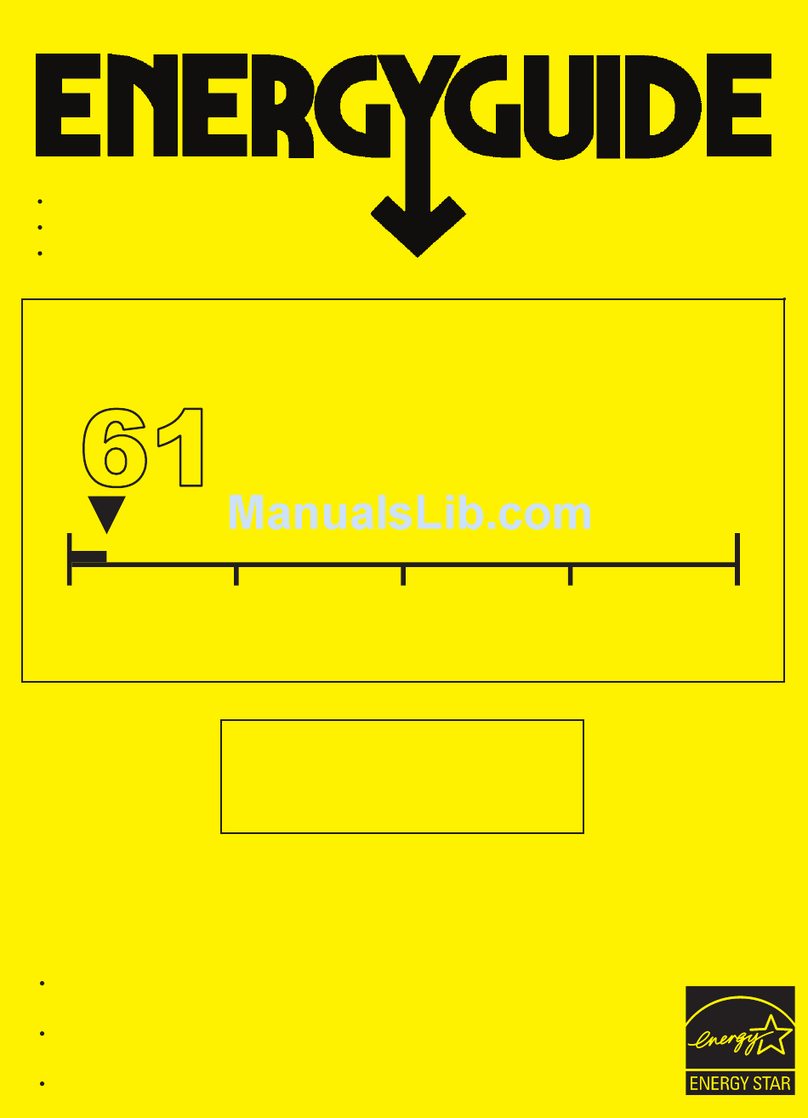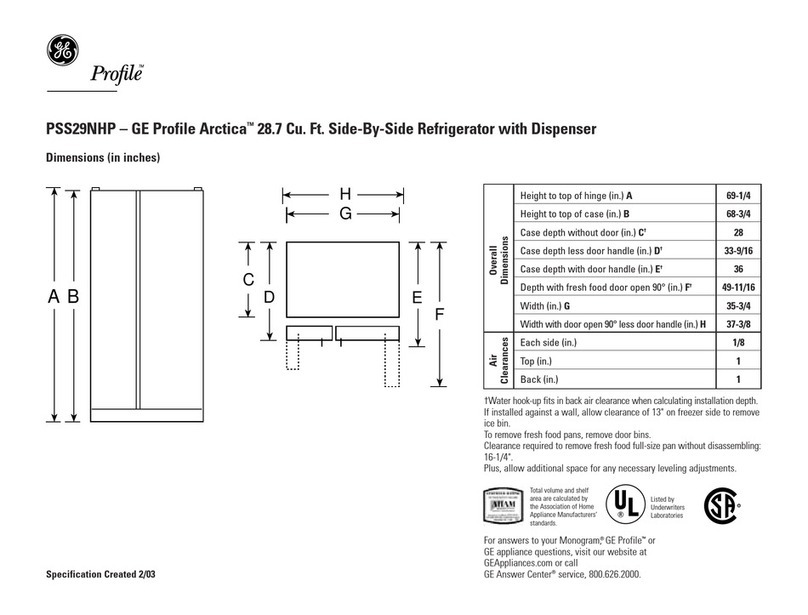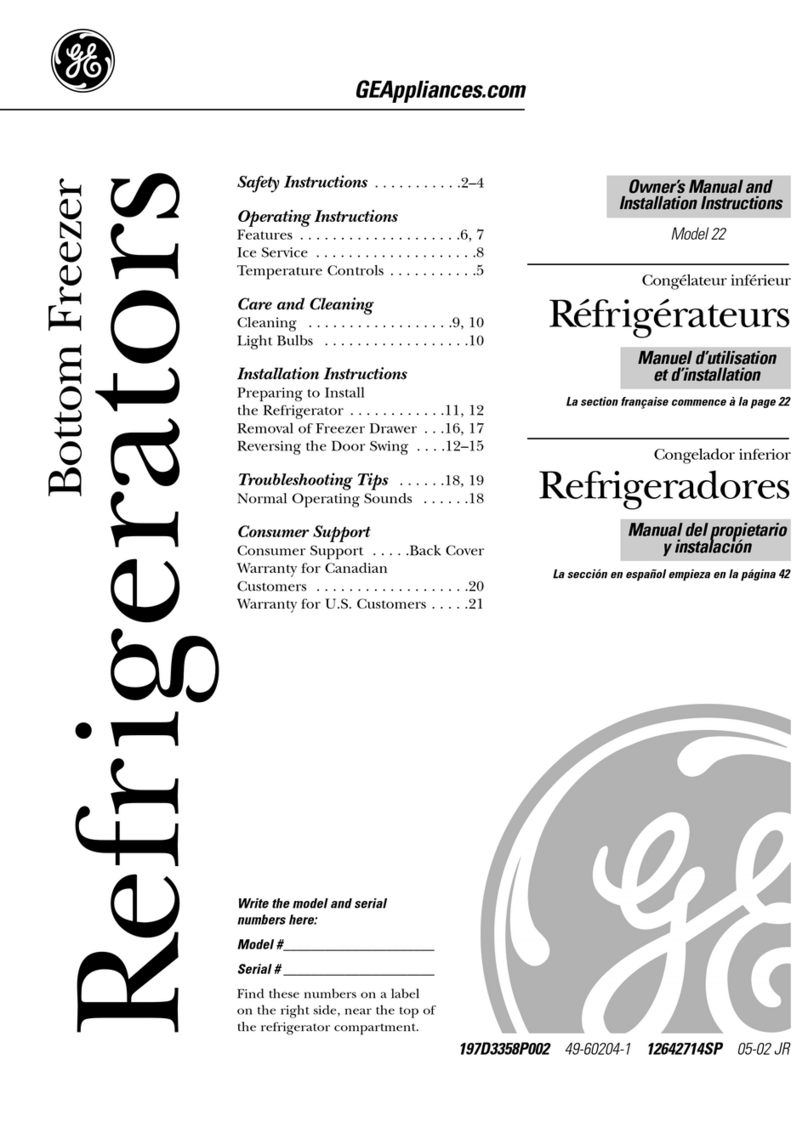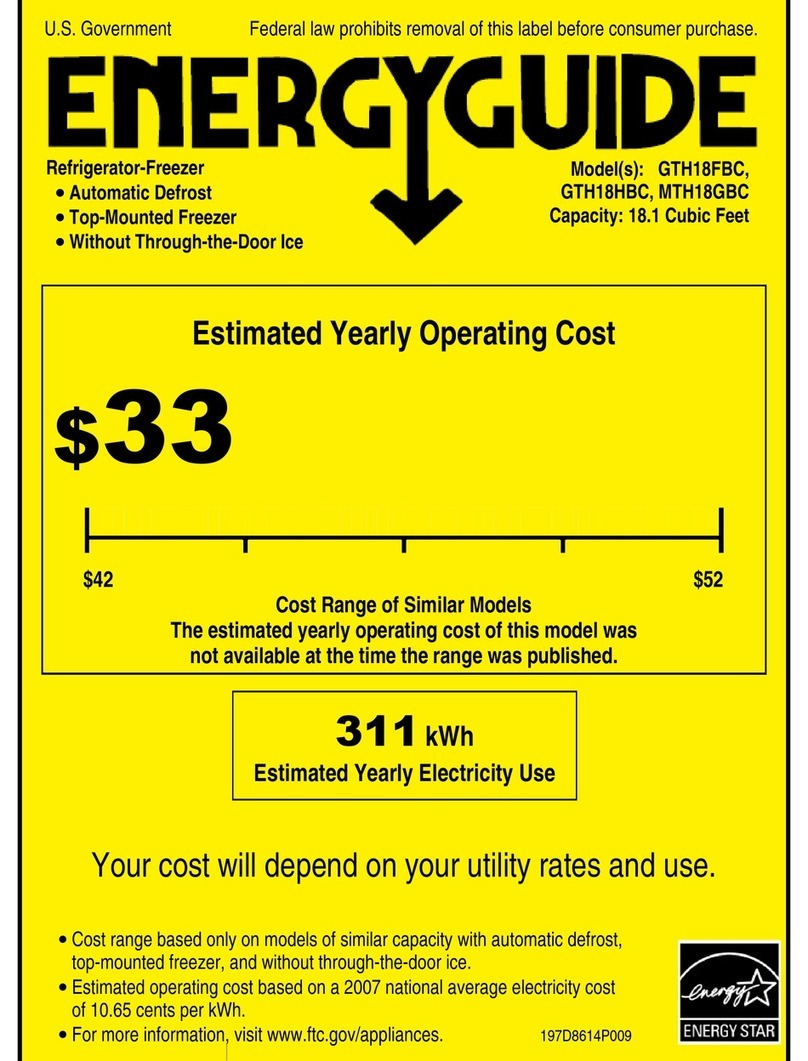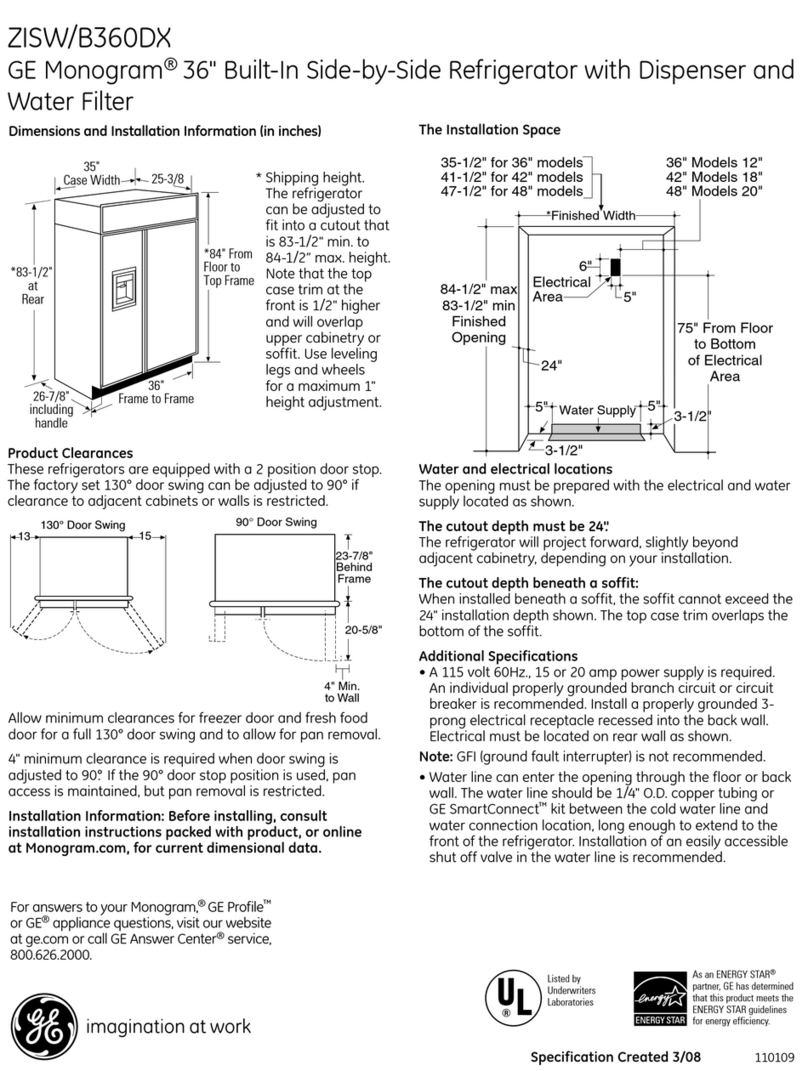CAUTION:
Q
If
you use your refrigerator before connecting
the water line, make sure the icemaker feeler
arm is kept in the STOP (up) position.
●
Do not install the icemaker tubing in areas
where temperatures fall below freezing.
●
When usin
g
any electrical device (such
as a
power drill) during installation, be sure the
device is insulated or wired in a manner to
prevent the hazard of electric shock.
s
All installations must be in accordance with
local plumbing code requirements.
WHAT YOU WILL NEED
● A cold water supply is required for automatic
icemaker operation. The water pressure must be
between
20
and 120 p.s.i.
●
Power
MM,
unless you have a self-piercing valve.
● Copper tubing, 1/4” outer diameter to
connect the refrigerator to the water supply.
Be sure both ends of the tubing are cut square.
To determine how much copper tubing you
need: measure the distance from the water valve
on the back of the refrigerator to the water
supply pipe. Then add 8 feet. Be sure there is
sufficient extra tubing (about 8 feet coiled into
3 turns of about 10 inches diameter) to allow the
refrigerator to move out from the wall
tier
installation. Do not use plastic tubing or plastic
fittings because the water supply line is under
pressure at all times. Also, certain types of
plastic tubing may become brittle with age and
crack, resulting in water leakage.
● Shutoff valve to connect to the cold water
line. The shut-off valve should have a water inlet
with a minimum inside diameter of 5/32” at the
point of connection to the COLD WATER LINE.
Saddle-type shut-off valves are included in many
water supply kits. Before purchasing, make sure
a saddle-type valve complies with your local
plumbing codes.
● Two 1/4” outer diameter compression nuts
and 2 ferrules (sleeves)—to connect the
copper tubing to the shutoff valve and the
refrigerator water
valve.
. If
your existing water line has a
flared fitting at
the end, you will need an
adapter (available at
plumbing supply stores) to connect the water
line to the reiiigerator
OR—you can cut off the
flared fitting with a tube cutter and then use a
compression fitting.
WARRANTY INFORMATION
This water line installation is not warranted by
the refrigerator or icemaker manufiicturer.
Follow these instructions carefidly to minimim
the risk of expensive water damage.
I
Turn on the nearest faucet long enough to clear
the line of
water.
~
INSTALL THE SHUTOFF VALVE ON THE
NEAREST FREQUENTLY USED DRINKING
WATER LINE.
Typical ways to
conneet
to water supply
Through floor Undersink Through wall to
In crawl
to basement tocold utility room cold space under
cold water pipe water pipe water pipe
house
a.
Choose a location for the valve that is easily
accessible. It is best to connect into the side of
a vertical water pipe. When it is necessary to
connect into a horizontal water pipe, make the
connection to the top or side, rather than at the
bottom, to avoid drawing off any sediment
horn
the water pipe.
b.
Drill a 1/4” hole in the water pipe, using a
sharp bit. Remove any burrs resulting from
drilling the hole in the pipe. (Do not drill a hole if
the valve is a self-piercing type.)
c. Fasten the
Pipe
Washer
shutoff valve to
the cold water
C’ampl
I
L
pipe with the
pipe clamp.
d. Tighten the
clamp screws until
the sealing washer
begins to swell. Do
not over-tighten or
you may crush the
copper tubing.
Inlet
end
rtical
*
cold water
pipe
8
-—
.
